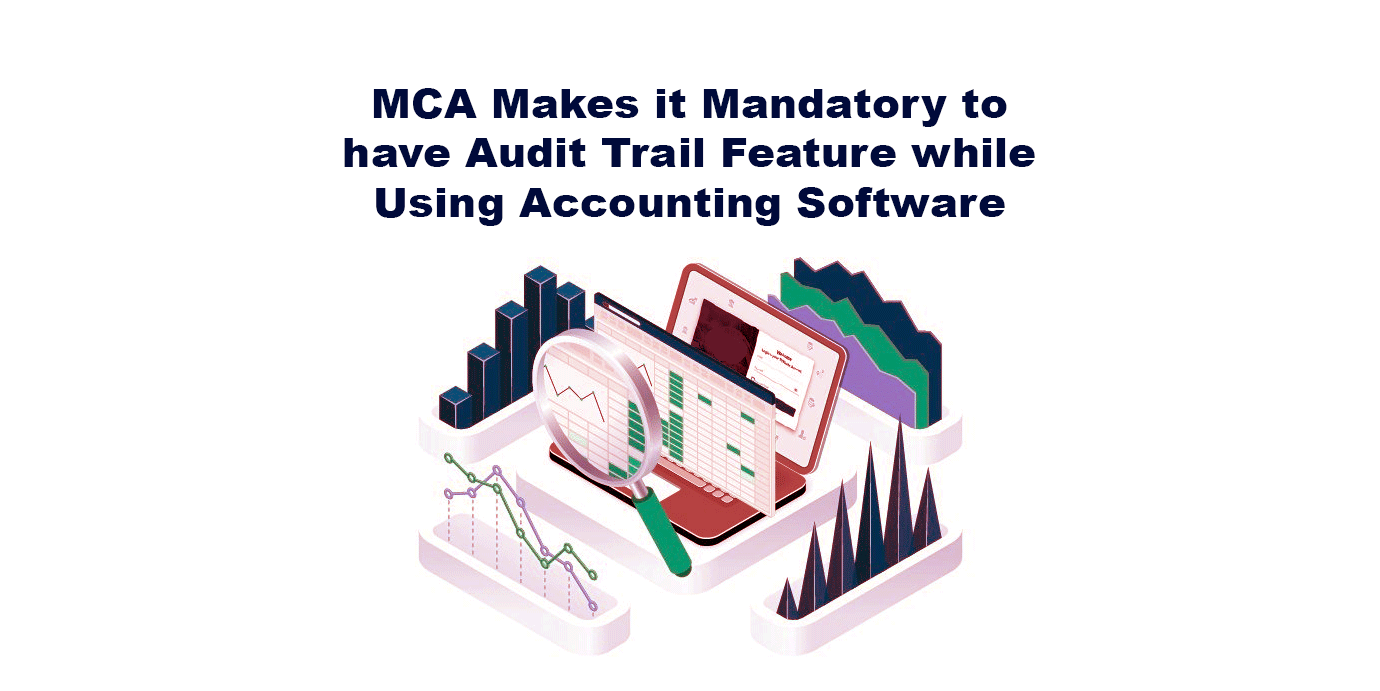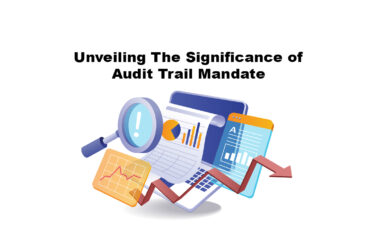The MCA vide its notification dated 24th March, 2021 had introduced the concept of audit trails by inserting proviso to rule 3(1) of the Companies (Accounts) Rules, 2014. It mentioned that “for the F.Y. commencing on or after 1st April, 2021, every company which uses accounting software for maintaining its books of account, shall use only such accounting software which has a feature of recording audit trail of each and every transaction, creating an edit log of each change made in books of account along with the date when such changes were made and ensuring that the audit trail cannot be disabled.”
However, the applicability was deferred by 1 year by amending the same vide Companies (Accounts) Second Amendment Rules, 2021. The new date of applicability was 1st April, 2022. Yet again, the MCA has amended the proviso vide Companies (Accounts) Second Amendment Rules, 2022 and has deferred the applicability by 1 more year. And therefore, with effect from April 1, 2023, all accounting softwares used by Indian Companies must have an audit trail feature.
What is an Audit Trail?
An Audit Trail is a detailed, chronological record where accounting, project details, and other financial data are tracked and traced. It is advisable to have an audit trail as it would verify and track all kinds of transactions, work processes, accounting details, trades in brokerage accounts and likes, especially now that the MCA has made it mandatory.
What must be included in the Audit Trail?
- Details of every transaction that takes place within the company, including the date, amount and nature of the transaction.
- Details of every change made to the books of accounts, including the date and nature of the change.
- Details of all authorization for transactions and changes made to the books of accounts, including the names of the persons who authorized them.
- Details of all approvals and rejections of transactions and changes made to the books of accounts, including the names of the person who approved or rejected them.
- Details of all access to the books of accounts, including the date and time of access, and the name of the person who accessed them.
- Details of all backup and restoration activities related to the books of accounts.
What are the Audit Trail Feature requisites in the Accounting Softwares?
- The audit log should be preserved until the accounting records are no longer valid.
- A timeline stamp must be included in the accounting program.
- On a date-by-date basis, the audit trail (edit log) should maintain track of all operations performed using the software.
- The software must track all the transactional changes.
- The accounting software should track and monitor all changes to the transaction, which should then be reported in the audit log (from the establishment of the transaction to its modification and deletion).
- The software should offer a function which allows you to record user information.
- The accounting software should record login information from creation to modification to deletion.
- The software should be able to tell the difference between a technical log and an audit log.
What challenges would possibly be encountered in implementing Audit Trail?
Desktop Application:
- Will have to reinstall newer version of the software that have an Audit Trail if the accounting software provider builds one.
- Cloud software vendors are better because you don’t have to change hardware requirements. The software gets updated automatically.
Database Storage Architecture:
- Every transaction and the version history will have to be tracked, and therefore the database and storage architecture must be accounted for.
- Long-term maintenance of audit logs can prove challenging for many organizations because it can occupy extensive storage space that may not be readily available in desktop applications.
Existing software might not be able to support it:
- It isn’t easy to reconstruct the database transaction order if the old software doesn’t have an audit trail. It may be more challenging to comply with regulations, and it may not support verification and audit requirements.
- Foreign companies must adhere to the financial authority’s local jurisdiction rules. If the company is registered under the MCA, the audit trail feature should be available in their accounting software.
Interlinkages of transactions:
- Front-end transactions like invoices, billing, and inventory management will need to be accounted for.
- Automatic transactions like Exchange gain or loss, Adjustments also need to be accounted for.
Location and back up:
- Ensure audit trail information is stored in a secure location and backed up regularly. These can be extremely useful in historical reporting and solving problems in the future.
- An audit trail should include sufficient information to establish what events occurred and who or what caused them. Tamper proof ensures that authorized users only access the data and for official purposes requires some method of tracking transactions and who has accessed the data and when.
However, there are several accounting software options that offer features to help businesses maintain an audit trail that includes deleted transactions, as well as other audit-related features. Some examples of such softwares are QuickBooks, Xero, and Sage. These software programs offer various features such as the ability to track changes to transactions, maintain an audit trail, and implement internal controls to ensure the accuracy and completeness of financial data. It is advisable for businesses to consult with a qualified accountant or auditor to determine the specific requirements that apply to their industry and jurisdiction and to select an accounting software that meets their needs.





